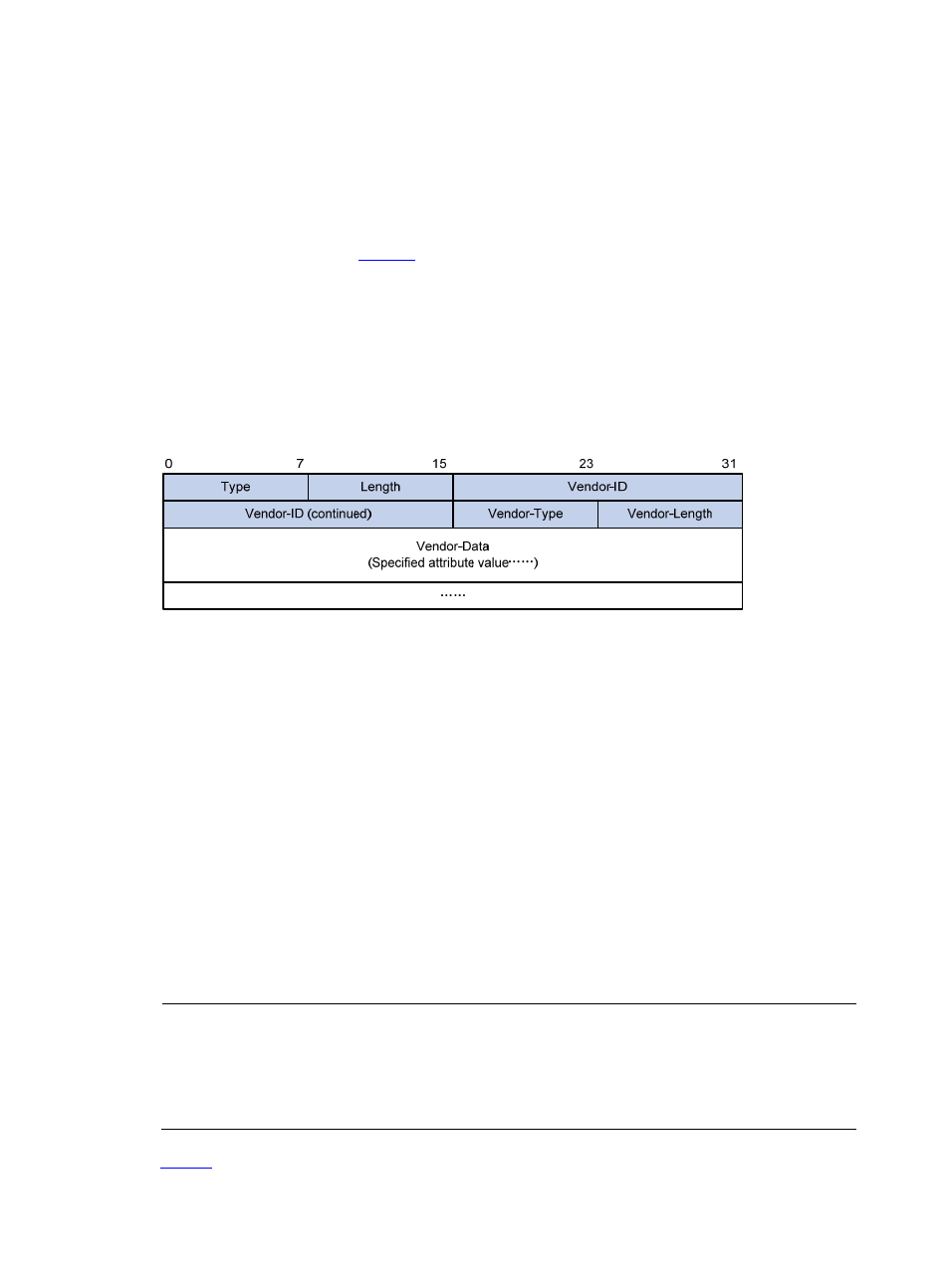Extended radius attributes, Protocols and standards, Configuring radius – H3C Technologies H3C SecPath F1000-E User Manual
Page 414: Configuration task list

6
Extended RADIUS Attributes
The RADIUS protocol features excellent extensibility. Attribute 26 (Vender-Specific) defined by RFC 2865
allows a vender to define extended attributes to implement functions that the standard RADIUS protocol
does not provide.
A vendor can encapsulate multiple type-length-value (TLV) sub-attributes in RADIUS packets for extension
in applications. As shown in
, a sub-attribute that can be encapsulated in Attribute 26 consists
of the following four parts:
•
Vendor-ID (four bytes): Indicates the ID of the vendor. Its most significant byte is 0 and the other
three bytes contain a code complying with RFC 1700. The vendor ID of H3C is 2011.
•
Vendor-Type: Indicates the type of the sub-attribute.
•
Vendor-Length: Indicates the length of the sub-attribute.
•
Vendor-Data: Indicates the contents of the sub-attribute.
Figure 4 Segment of a RADIUS packet containing an extended attribute
Protocols and Standards
The protocols and standards related to RADIUS include:
•
RFC 2865: Remote Authentication Dial In User Service (RADIUS)
•
RFC 2866: RADIUS Accounting
•
RFC 2867: RADIUS Accounting Modifications for Tunnel Protocol Support
•
RFC 2868: RADIUS Attributes for Tunnel Protocol Support
•
RFC 2869: RADIUS Extensions
Configuring RADIUS
Configuration Task List
NOTE:
•
The RADIUS scheme configured through the Web interface is named system.
•
By default, there is no RADIUS scheme named system in the system. When you select any item under
User > RADIUS from the navigation tree to enter the page of the item, the system will automatically
create a scheme named system.
lists the RADIUS configuration steps:
